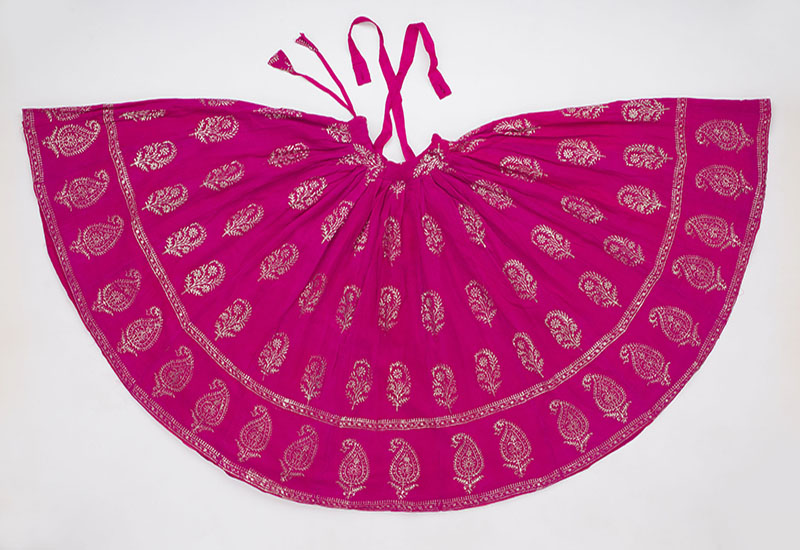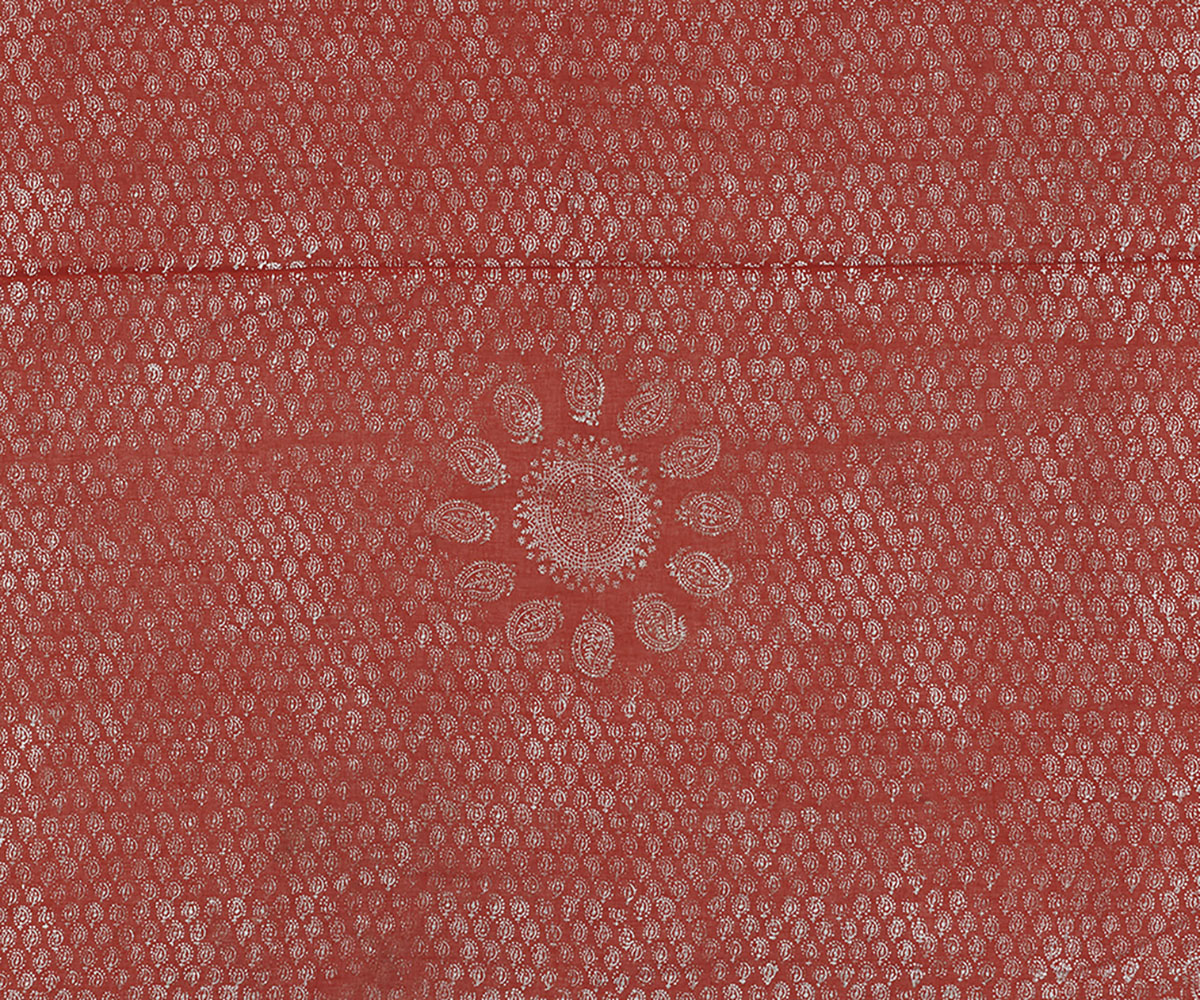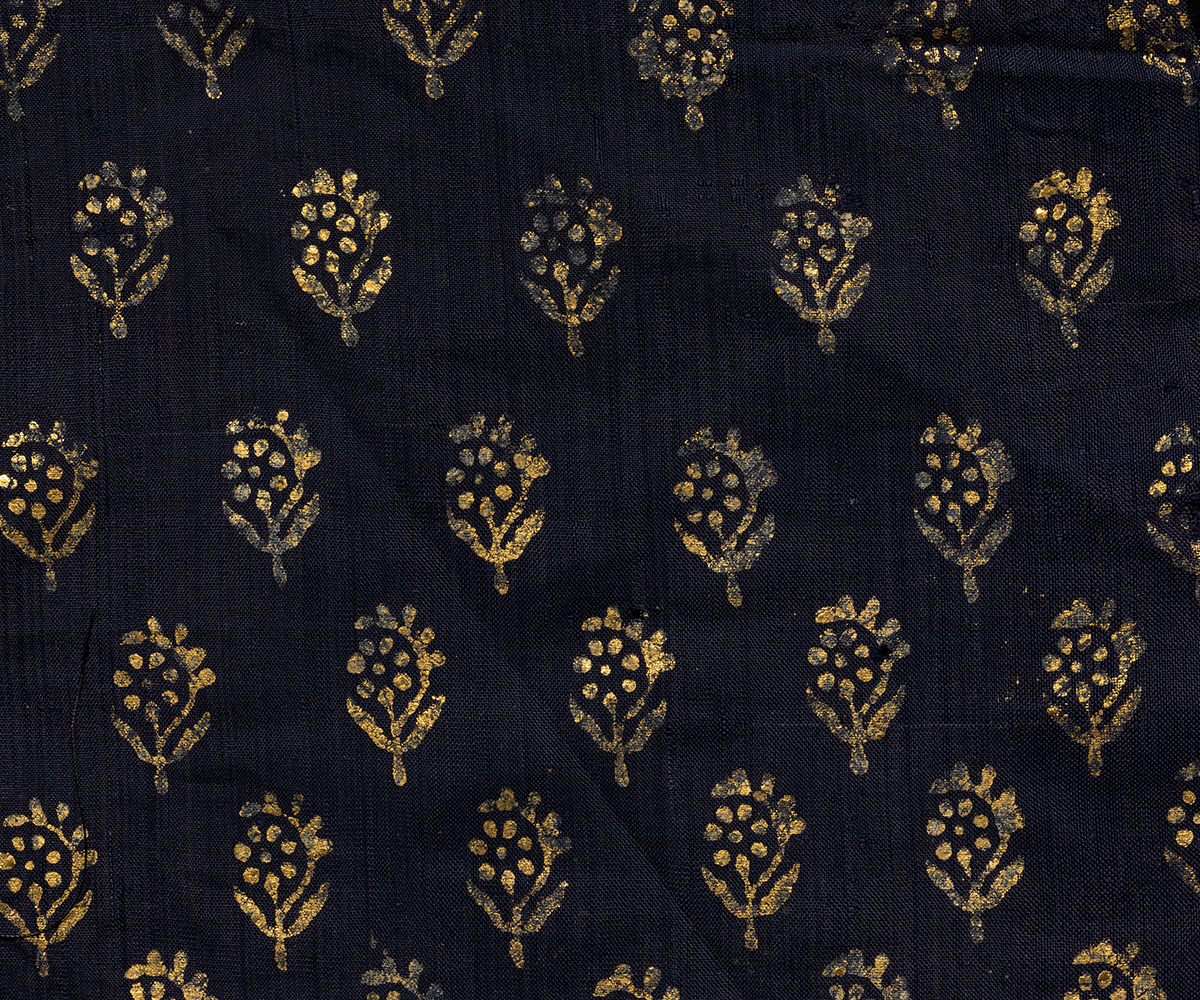ARTICLE
Varak
Varak is applied on the textile through transfer using blocks. The traditional process uses a gum derived from the Saresh tree known as saras, which was stamped on the fabric using blocks. Varak was applied while the gum was moist and pressed used a wrapped muslim cloth to make it stick. It was then smoothened and burnished by rubbing a stone such as agate. To prevent the silver/gold from tarnishing, a layer of waterproof lacquer was painted over it. Besides blocks carved out of wood, brass blocks are also used in case the binding material is viscous paste rogan.
Varak was and continues to be used in holy shrines and temples. Due to its usage of precious metals and fragile finish, it was printed on far fewer garments although despite this, it was seen as an easier alternative to gold brocades. From nineteenth century onwards, varak made its way to garments such as ghagras (skirts), sarees, odhnis (veils) and turbans. It also became a distinctive part of textiles such as chanderi and banarasi sarees and dupattas. Varak is extremely rare today, and its practice is limited to a couple of printers in Jaipur.
Bibliography
Our website is currently undergoing maintenance and re-design, due to which we have had to take down some of our bibliographies. While these will be re-published shortly, you can request references for specific articles by writing to hellomapacademy@map-india.org.









